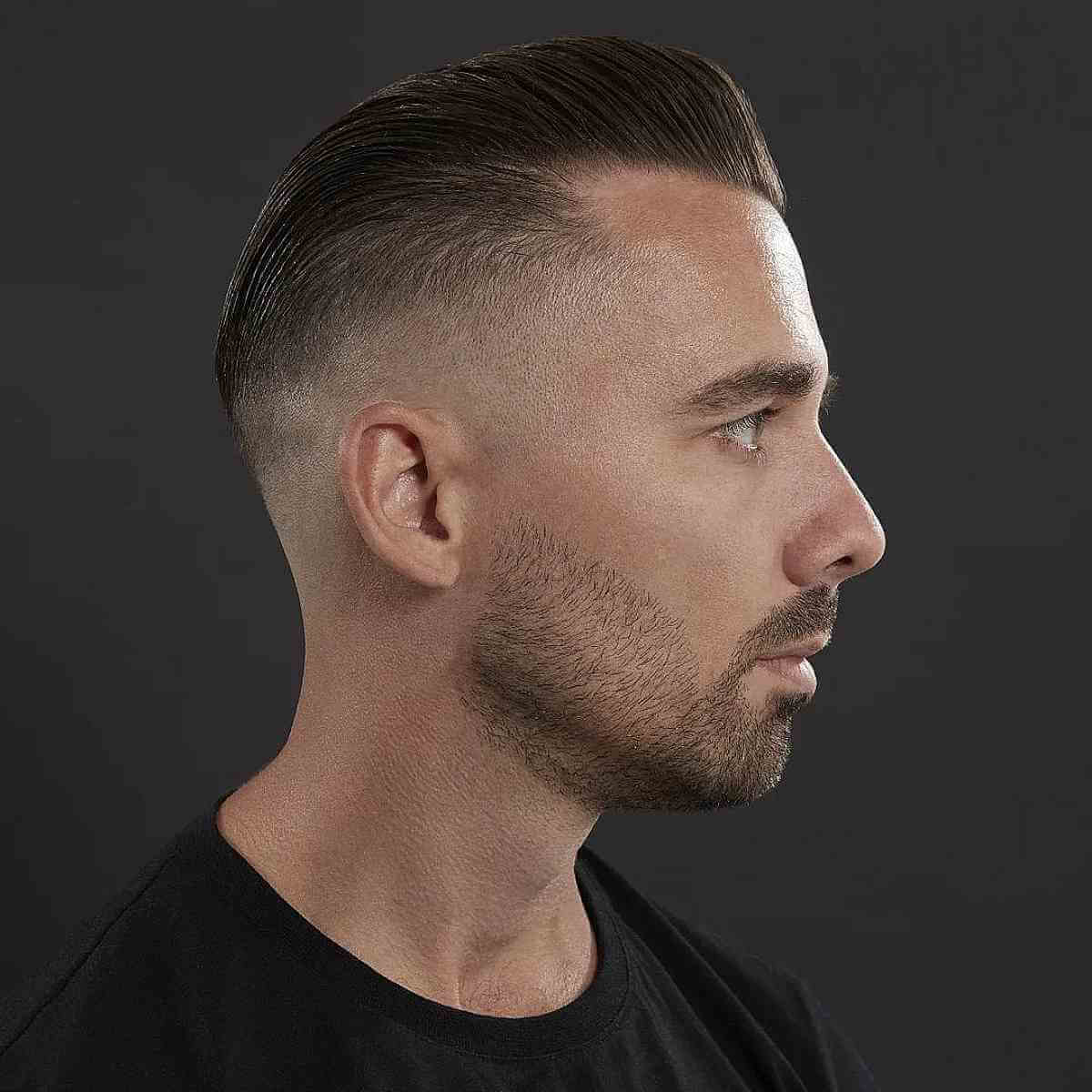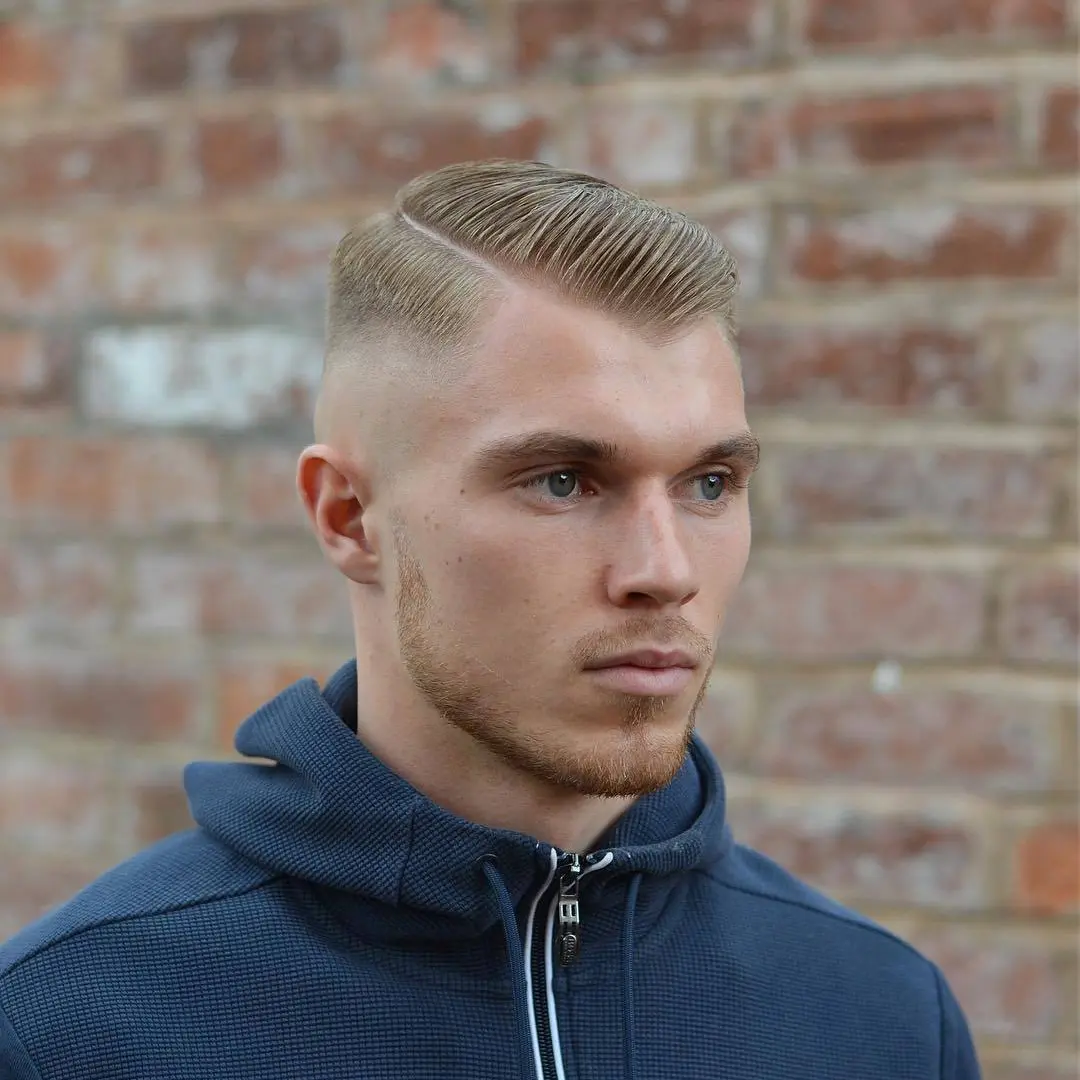Best Hairstyles for Thin Fine Hair Men: Mastering Volume and Style

The challenge of managing thin, fine hair is a common concern for many men. Far from being a limitation, this hair type presents a unique opportunity for strategic grooming. With the correct approach to cutting and styling, it is entirely possible to create an illusion of density, enhance texture, and achieve a sophisticated, confident appearance. This exploration delves into the principles and specific cuts that effectively address the characteristics of delicate hair, providing comprehensive solutions for achieving optimal aesthetic outcomes.
Understanding Thin, Fine Hair
Before exploring specific styles, it is crucial to distinguish between “thin” and “fine” hair, as these terms are often used interchangeably but refer to distinct attributes. Fine hair refers to the diameter of individual hair strands; fine strands are smaller in circumference than coarse strands. Thin hair, conversely, refers to hair density, meaning the number of hair follicles per square inch of the scalp. A man can have fine hair that is also dense, or coarse hair that is thin. However, for many, the concern arises when hair is both fine and thin, leading to a lack of volume, increased scalp visibility, and difficulty in holding styles.
The primary objective when selecting and styling cuts for diminished density is to counteract these characteristics. This involves minimizing the appearance of sparse areas, creating visual texture, and lifting hair from the scalp to generate perceived volume. Heavy, long styles often exacerbate the issue by weighing down fine strands, making them appear flatter and revealing more of the scalp. Therefore, the most effective strategies typically involve shorter lengths, strategic layering, and styling techniques that promote lift and movement.
Optimal Haircuts for Enhanced Appearance
A range of haircut styles is particularly well-suited for individuals with delicate hair, each offering distinct advantages in creating the desired illusion of fullness and texture.
-
The Short Textured Crop:
This style features closely cut sides and back, often with a fade or undercut, contrasting with a slightly longer top section that is cut with significant texture. The top hair is typically chopped or point-cut to create irregular lengths, which inherently adds volume and movement. The shorter length of the top section prevents it from weighing down, allowing the texture to stand out.- Why it works: The textured top creates a dynamic, voluminous look that disguises areas of lower density. The short sides minimize contrast, making the overall head of hair appear fuller.
- Styling: A matte styling paste or clay is ideal. Hair should be finger-styled forward or slightly to the side, emphasizing the choppy texture. A small amount of product is sufficient to avoid weighing down the strands.
-
The Buzz Cut:
The buzz cut involves cutting all hair to a uniform, very short length using clippers. This can range from a grade one (very short) to a grade four or five (slightly longer).- Why it works: By eliminating any significant length differences, the buzz cut removes the visual contrast between denser and sparser areas of the scalp. It draws attention away from the hair itself and towards the facial features, providing a clean, masculine aesthetic that requires minimal maintenance.
- Styling: Virtually no styling is required, beyond regular washing.
-
The Crew Cut:
A classic and timeless style, the crew cut features tapered sides and back that are shorter than the top. The hair on top is left slightly longer, gradually decreasing in length from the front to the crown.- Why it works: The neat, professional appearance of the crew cut is excellent for maintaining a structured look. The shorter length on top can be easily styled for a subtle lift, contributing to an impression of greater density. It provides enough length for styling without being so long as to appear thin.
- Styling: A light pomade or styling cream can be used to add a slight hold and shine, often brushed forward or to the side. Blow-drying the top upwards can enhance volume.
-
The French Crop:
Similar to the textured crop, the French crop is characterized by short sides and back, with a slightly longer top that includes a distinct, blunt fringe (bangs) cut straight across the forehead.- Why it works: The fringe is the key element here, as it effectively covers the forehead, diverting attention from a receding hairline or thinning at the temples. The block of hair created by the fringe gives an immediate impression of density and structure.
- Styling: A matte product is typically used to push the fringe forward, creating a clean, defined line. Texturizing the top can add further dimension.
-
The Modern Side Part:
This style involves creating a defined part on one side of the head, with the hair swept over to the other side. Modern interpretations often incorporate a faded or tapered side.- Why it works: A side part creates an optical illusion of weight and direction, making the hair appear fuller. By lifting the hair at the root along the part line, significant volume can be achieved. The structured nature of the part also provides a clean, polished look.
- Styling: Volumizing mousse or spray applied to damp hair before blow-drying is crucial. The hair should be blow-dried against the natural fall, lifting it at the roots. A light-hold pomade or cream can then be used to define the part and secure the style.
-
The Quiff (Modified):
While a traditional, voluminous quiff can be challenging for fine hair, a modified, shorter version can be highly effective. This involves lifting the front section of hair upwards and slightly backward.- Why it works: The primary benefit of the quiff is the height it creates, which immediately adds an impression of volume and presence. For fine hair, the key is to keep the quiff relatively short and not too heavy, ensuring it can maintain its lift.
- Styling: A pre-styling product like a volumizing spray is essential. Hair should be blow-dried upwards and backward, using a brush or fingers to create the desired shape. A lightweight paste or texture powder can then be used to hold the style without weighing it down.
-
Messy/Tousled Styles:
These styles embrace a deliberately disheveled, textured appearance, often with layers and irregular lengths throughout the top.- Why it works: The inherent irregularity and texture of a messy style are ideal for disguising areas of lower density. The lack of a defined part or smooth finish means that any sparse spots are less noticeable, and the overall impression is one of natural volume and movement.
- Styling: Sea salt spray applied to damp hair, followed by scrunching and air-drying or low-heat blow-drying, can create a natural, tousled look. A matte clay or paste can be used to define individual sections.
-
The Comb Over (Strategic):
This is not the traditional “comb over” used to conceal baldness, but rather a modern style where the top hair is strategically swept to one side, often accompanied by a distinct fade on the sides.- Why it works: By directing the existing hair to one side, it can create a denser appearance in specific areas. When combined with a sharp fade, the contrast can make the top appear fuller and more substantial. It leverages the available hair to create a stylish, intentional look.
- Styling: Volumizing products and careful blow-drying are necessary to achieve lift and direction. A light-to-medium hold product will maintain the style without flattening the hair.
Styling Techniques and Products for Volume
Beyond the cut, specific styling techniques and product choices are paramount for maximizing the appearance of fullness in delicate hair.
- Volumizing Shampoos and Conditioners: These products are formulated to cleanse without weighing hair down and often contain ingredients that plump up the hair shaft or provide a light, lifting effect.
- Pre-Styling Products: Mousses, volumizing sprays, and root lifters applied to damp hair before blow-drying can provide a crucial foundation for volume.
- Blow Drying Techniques: Using a blow dryer on a cool or low-heat setting, directing the airflow at the roots while lifting the hair with fingers or a vent brush, is highly effective. Drying against the natural growth pattern can also create significant lift.
- Lightweight Styling Products: Matte clays, pastes, and texture powders are superior choices. They provide hold and texture without the heavy, greasy feel of traditional gels or waxes, which can flatten fine hair.
- Texturizing Powders: These innovative products are applied directly to the roots of dry hair and instantly create friction and grip, resulting in dramatic, instant volume and a matte finish.
- Avoiding Heavy Products: Products with high shine or heavy hold often contain oils and waxes that can weigh down fine strands, making them appear greasier and thinner.
FAQs Regarding Optimal Hairstyles for Men with Thin, Fine Hair
-
Q: Can long hair be maintained with this hair type?
- A: Generally, long hair is not recommended for individuals with thin, fine hair. The weight of longer strands tends to pull the hair down, making it appear flatter and revealing more of the scalp. While medium-length styles with strategic layering can sometimes work, they require meticulous styling and product use to maintain any semblance of volume. Shorter styles are almost always more effective for creating an illusion of density.
-
Q: Which products are most effective for adding volume?
- A: For adding volume, focus on lightweight products designed specifically for this purpose. Volumizing mousses and sprays applied to damp hair before blow-drying provide foundational lift. Texture powders applied to dry roots offer instant, dramatic volume. Lightweight matte clays and pastes are excellent for styling and maintaining texture without weighing hair down. Sea salt sprays can also add body and a natural, tousled texture.
-
Q: How frequently should hair be washed?
- A: Hair with diminished density often benefits from daily or every-other-day washing. Fine hair can become greasy more quickly, and oil buildup can weigh down strands, making them appear flatter and thinner. Using a gentle, volumizing shampoo helps to cleanse the scalp without stripping natural oils excessively, preparing the hair for optimal styling.
-
Q: Is it possible to achieve a genuinely thicker appearance?
- A: While the actual thickness of individual hair strands cannot be changed through styling, it is entirely possible to create a significant illusion of density and fullness. Strategic haircuts that incorporate layers and texture, combined with volumizing styling techniques and products, can make hair appear substantially thicker and more robust. Cosmetic hair fibers can also be used to temporarily fill in sparse areas, enhancing the visual density.
-
Q: What information should be conveyed to a barber?
- A: When consulting a barber, clearly communicate concerns about hair thinness and fineness. Specify the desire for styles that create volume, texture, and an illusion of density. Point out any specific areas of concern, such as a receding hairline or thinning crown. Bringing reference photos of desired styles that are suitable for delicate hair can also be highly beneficial for effective communication.
Tips for Maintaining and Enhancing Hair Appearance
Effective management of delicate hair extends beyond the haircut itself, encompassing daily routines and long-term care.
- Regular Trims: Schedule consistent trims every 3-5 weeks to maintain the shape of the chosen style and remove split ends, which can make hair appear even thinner and less healthy.
- Gentle Handling: Avoid aggressive brushing, particularly when hair is wet and most vulnerable. Use a wide-tooth comb or fingers to detangle. Similarly, pat hair dry gently with a towel instead of vigorous rubbing.
- Scalp Health: A healthy scalp is foundational for optimal hair growth. Use gentle, sulfate-free shampoos and consider occasional scalp massages to stimulate blood flow.
- Product Moderation: Less is often more. Over-applying styling products, even lightweight ones, can accumulate and weigh down fine strands, negating any volumizing efforts.
- Strategic Blow Drying: Always use a blow dryer on a cool or low-heat setting to prevent damage. Direct the airflow at the roots while lifting with fingers or a brush to maximize volume.
- Consider Hair Fibers: For temporary enhancement, cosmetic hair fibers can be sprinkled onto sparse areas to create an immediate visual increase in density, blending seamlessly with existing hair.
- Diet and Lifestyle: A balanced diet rich in proteins, vitamins, and minerals (especially biotin, zinc, and iron) supports overall hair health. Adequate hydration and stress management also contribute to hair vitality.
Concluding Remarks on Optimal Hairstyles for Men with Thin, Fine Hair
The perception that thin, fine hair is a styling impediment is a misconception. Instead, it represents an opportunity for a discerning approach to grooming. By understanding the unique characteristics of this hair type and embracing specific haircut strategies, men can significantly enhance their appearance. The selection of a suitable cut, combined with the judicious use of volumizing products and careful styling techniques, can transform the look of delicate strands, creating an impression of robust density and dynamic texture. Consulting with a skilled barber who understands the nuances of fine hair is invaluable, as is a willingness to experiment with different styles and products. Ultimately, the goal is to cultivate a confident, polished aesthetic that celebrates individual style rather than being defined by hair characteristics.







More suggestion: Shoulder Length Hairstyles For Thin Wavy Hair A Comprehensive Guide To Enhancing Volume And Texture